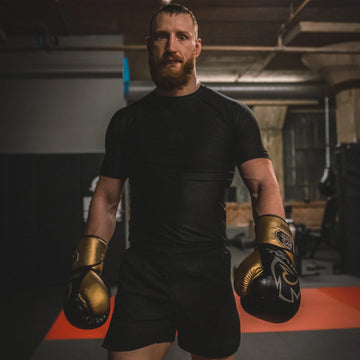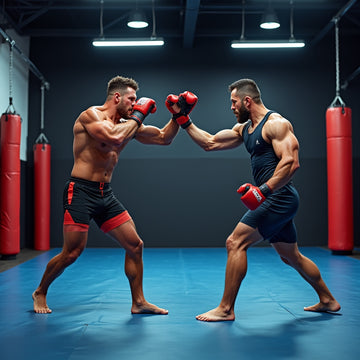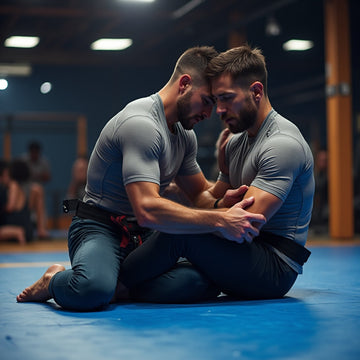Whether you’re stepping into the cage or rolling in a gym, skin protection can make or break your session. Long sleeve rash guards are more than just gear—they’re your first line of defense against scrapes, sweat, and even sunburn during outdoor drills. Curious why more fighters are suiting up? Let’s unpack what makes these tops a go-to choice.
Table of Contents
- What is a Long Sleeve Rash Guard?
- Benefits of Wearing Long Sleeve Rash Guards in MMA
- Pros and Cons: Long Sleeve vs Short Sleeve
- How to Choose the Right Long Sleeve Rash Guard
- Top Materials and Fabrics for MMA Rash Guards
- Care and Maintenance for Long Sleeve Rash Guards
- Do Professional MMA Fighters Wear Long Sleeve Rash Guards?
- Common Myths About Rash Guards
- Conclusion: Should You Invest in a Long Sleeve Rash Guard?
What is a Long Sleeve Rash Guard?
Imagine a second skin that stays tight, wicks moisture, and holds up through grappling scraps. That’s essentially a long sleeve rash guard—compression wear meets protective shell. Unlike a simple T-shirt, these tops use high-stretch fabrics to cling close, keeping you dry and cool. They guard against mat burns, sweat buildup and those red marks that linger for days.
Still curious? Check out the “Against All Gods” model, which uses seamless stitching and flatlock seams to illustrate why top fighters choose quality gear.
Benefits of Wearing Long Sleeve Rash Guards in MMA
Here’s the thing: sweaty, slippery grips and skin friction are your opponents too. A long sleeve design extends coverage, shielding your arms from mat burns while offering consistent compression to boost blood circulation—so you recover faster and deal with less post-training stiffness.
Quality fabrics pull sweat off your skin, channeling moisture to the surface where it evaporates. You stay cooler during clinches, reducing that sticky, uncomfortable feeling. Plus, UV protection isn’t just for surfers—sunlight can fade tattoos and parch skin during outdoor drills.
And don’t overlook hygiene. A close-fitting rash guard cuts down on direct skin contact, limiting the spread of ringworm and staph infections in crowded gyms.
Pros and Cons: Long Sleeve vs Short Sleeve
Debating long sleeves or short sleeves? It boils down to coverage versus temperature. Here’s the rundown:
- Long Sleeve Pros: Full arm protection, extra warmth in cold gyms, wider UV defense, uniform compression from wrist to torso.
- Long Sleeve Cons: Can feel warm in hot climates, more fabric to dry, sleeves might snag on Velcro if too loose.
- Short Sleeve Pros: Better breathability, quicker drying, less material means more ventilation.
- Short Sleeve Cons: Less friction defense, minimal arm coverage.
| Feature | Long Sleeve | Short Sleeve |
|---|---|---|
| Coverage | Full arms and torso | Mostly torso |
| Temperature Control | Warmer in heat | Better breathability |
| Protection | More against burns | Less friction defense |
| Dry Time | Longer | Shorter |
How to Choose the Right Long Sleeve Rash Guard
Selecting your ideal rash guard hinges on fit, fabric and finish. Fit should feel snug at the shoulders without restricting movement; loose folds invite friction back.
Check fabric ratios: an 80/20 polyester-spandex blend often strikes the best balance of stretch and durability. Flatlock seams enhance comfort, so look for those to prevent chafing during extended sparring sessions.
Design details matter too: thumb loops anchor sleeves during scrambles, while silicone waist grippers keep the guard from riding up when you’re inverted. If you want pro-level options, browse our collection of long sleeve rash guards to see reinforced elbows and patterned panels that hug your shape.
Think about your training style. Gi work or wrestling drills benefit from tougher weaves that resist mat abrasion more than lightweight fabrics designed for striking arts.
Top Materials and Fabrics for MMA Rash Guards
Material choice impacts comfort, compression and longevity. Here are top contenders:
- Polyester-Spandex: The go-to blend; it stretches well and wicks moisture. The weave snaps back quickly after hard rolls.
- Nylon-Spandex: Softer to the touch, it dries fast and resists chlorine fade if you cross-train in a pool.
- Supplex: Treated nylon that stays softer but still wicks water. It’s pricier, but worth it if you log daily sessions.
For a real-world example, check out our breakdown on fabric performance comparisons.
Care and Maintenance for Long Sleeve Rash Guards
Proper upkeep extends your guard’s life and performance:
- Rinse immediately after use to clear salt, sweat and bacteria.
- Machine wash on a gentle cycle with cold water and mild detergent.
- Avoid fabric softeners—they clog moisture channels and dull elasticity.
- Air dry flat or hang inside out to keep prints vivid and seams strong.
Stick to this routine, and you’ll notice fewer odors, less color loss and less premature wear.
Do Professional MMA Fighters Wear Long Sleeve Rash Guards?
Yes—and not just amateurs. Many pro gyms require rash guards to curb skin infections during high-traffic classes. Fighters like Khabib Nurmagomedov favor full sleeves in cooler camps for joint warmth and steady compression. Even in hot climates, they switch between long and short sleeves based on drills. It’s all about keeping skin healthy and training consistent.
To explore top-tier picks, visit our pro-level rash guard line.
Common Myths About Rash Guards
- Myth: “They restrict movement.” Reality: Quality spandex blends move with you, rarely hindering flexibility.
- Myth: “You only need them for grappling.” Reality: Striking sessions also generate friction—loose T-shirts ride up and expose skin.
- Myth: “They’re just for looks.” Reality: Beyond graphics, rash guards deliver protection, compression and moisture control.
Conclusion: Should You Invest in a Long Sleeve Rash Guard?
If you train regularly—be it grappling, wrestling or MMA fitness—a long sleeve rash guard offers tangible benefits: better skin defense, muscle support and sweat management. Need style too? Our top picks double as confidence boosters when you step on the mat.
Updated: 08-18-2025










